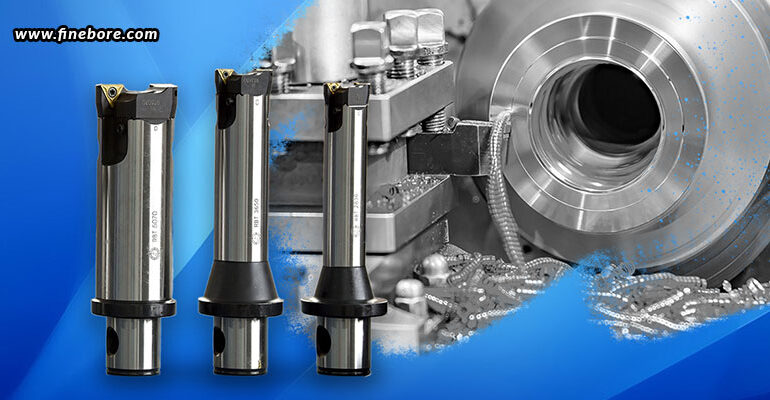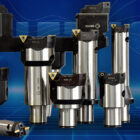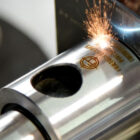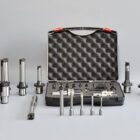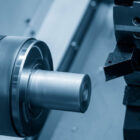The most common machining operation is hole making, with the majority of holes likely being reamed or bored following drilling. However, machinists have faced a number of challenges for as long as they have been boring holes. Anyone who has worked on a boring setup is familiar with the difficulties that might arise, including chip evacuation, coolant starvation, and straightness and surface finish. However, boring operations have gotten a little bit simpler over time. These and other deep-hole boring issues have been addressed by boring tools suppliers in Bangalore, and as a result, this frequently challenging machining procedure is now considerably less problematic. For instance, coolant-fed tools destroy bird nests and flush chips out of the hole, anti-vibration boring bars minimize noise, and fine-boring tools render the practice of “sneaking up on the bore” obsolete on factory floors. Let’s take a look at all of these boring problems, and how they have been taken care of.
Vibration
Let’s start with the most fundamental issue there is: vibration. A steel-shank boring bar’s maximum overhang is roughly four times its diameter, or possibly a little bit more, depending on the material of the workpiece, the depth of the cut, and how firmly the bar is being held. Carbide may easily expand up to six times its diameter and even ten times if conditions are ideal. If you go much over this ratio, vibration that leads to chatter will begin to show up. Maintaining a suitable surface finish as well as tool life and part tolerance become challenging too. Thankfully, modern machinists have more choices than the solid steel or carbide bars of the past. The majority of cutting tool manufacturers offer damped or anti-vibration boring bars, some of which have depth-to-diameter ratios of up to 14 times the diameter! There are also soon-to-be developed dynamic vibration absorber systems that can improve machining stability and damping. This is essentially a bulky tungsten mass positioned inside a hollow as near the cutting region as feasible and supported by elastomeric parts.
Chatter
Another challenge faced during boring is chatter. An undulating surface on a workpiece is created by a vibrating tool during machining, and when the cutting edge removes material from the surface, it creates fresh undulations in the form of waves. Because of this, the cutting forces and, consequently, the chip thickness change over time, which can considerably intensify vibrations and generate chatter. Vibrations and chatter are bad for the safety and quality of machining operations. They result in a rough surface finish, increased cutting forces, shortened tool and machine lives, limited productivity, and obtrusive noises. This is where some usage recommendations are suggested, such as always clamping the shank of any boring bar in a split sleeve or bushing, positioning the insert edge precisely on the centreline, using feeds and speeds that are similar to those of a shallower bore, and, depending on the material of the workpiece, slightly reducing the depth of cut. Other suggestions include using a bar that is around 20% larger in diameter than the drilled hole to facilitate chip evacuation and, if necessary, roughing the hole in smaller parts until the desired depth is attained.
Fine boring
On machining centres and other rotary applications, fine boring heads and bars can be utilized to bore diameters as small as a spaghetti noodle, as large as a truck tyre, and anywhere in between! All of this is made possible by some extremely precise adjustment skills, some with only 0.002 mm increments! For this, various shank lengths, diameters, and materials, such as heavy metal, carbide, steel, and damped bars, are available. A machinist can thus rapidly swap out one boring head for another or utilize the same shank for a solid-carbide milling cutter, indexable drill or end mill, chamfering tool, etc., saving setup time dramatically. Cycle times are also shortened for systems that support unique multi-step boring heads and form cutters.
Boring and other machining operations certainly have a bright future with these kinds of smart tooling solutions. Future tools will undoubtedly incorporate sensor technologies to further protect the workpiece, tools, and machines. Due to the machine control’s interactive adaptation of the cutting parameters, overload and vibration during the machining process will also be able to be identified early, and the boring bars will operate entirely automatically. As a result, operators can breathe easier knowing that the machining processes will be more reliable in the future.

